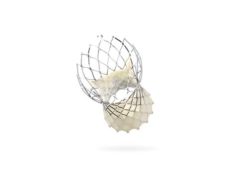
Medtronic’s ENDURANCE Supplemental trial of the company’s HVAD ventricular assist device has failed to meet its primary endpoint of all neurological events at 12 months. However, secondary results have shown superior results for patients treated with the system than those in control arm of the study, who had received the HeartMate II (Thoratec).
Results of Medtronic’s ENDURANCE Supplemental trial were presented in a late-breaking clinical trial session of the 2017 International Society for Heart and Lung Transplantation scientific meeting (ISHLT; 5–8 April, San Diego, USA). The study evaluated the company’s HVAD system as a destination therapy for patients needing left ventricular assist devices (LVAD) who received improved blood pressure management. The HVAD system is not approved in the USA for destination therapy.
While the trial did not meet its primary endpoint, secondary results showed that 76.4% of patients receiving the HVAD system were alive on the originally implanted device and free of disabling stroke, compared to 66.9% of patients in the control arm (non-inferiority p<0.0001; superiority p=0.0354). This prespecified secondary endpoint analysis showed the HVAD system was superior to the control group (absolute difference 9.2%), as evaluated by this composite endpoint.
“In the ENDURANCE trial, we were concerned about the higher rate of stroke in the HVAD group compared to the control. In the ENDURANCE Supplemental trial, that gap closed and the stroke rates are comparable: there was no statistically significant difference between the HVAD and HeartMate II. We believe the narrowing of those rates was most likely due to blood pressure management,” says Carmelo Milano, co-principal investigator, and surgical director of cardiac transplantation and left ventricular assist device programs for the Division of Cardiothoracic Surgery at Duke University Medical Center in Durham, USA.
Device exchange was not included in the primary endpoint, but transient ischaemic attacks were. Fourteen-point-seven per cent of patients who received the HVAD system experienced a neurologic event within 12 months of implantation, compared to 12.1% of patients in the control arm (p=0.14). Post-hoc analysis revealed a rate of disabling stroke or death of 18.8% at 12 months among patients receiving the HVAD system, compared to 21.6% of patients receiving the control device.
Additional post-hoc analyses comparing data from the ENDURANCE Supplemental trial to data from the original ENDURANCE Destination Therapy trial show:
- The pre-specified blood pressure management protocol in the ENDURANCE Supplemental trial was effective in reducing the mean arterial blood pressure by a clinically meaningful amount when compared to HVAD patients from the original ENDURANCE trial (as well as when compared to the control group in ENDURANCE Supplemental).
- A 24.7% reduction of overall stroke and transient ischaemic attack incidence—and a 50% reduction in hemorrhagic strokes—in patients receiving support from the HVAD system.













